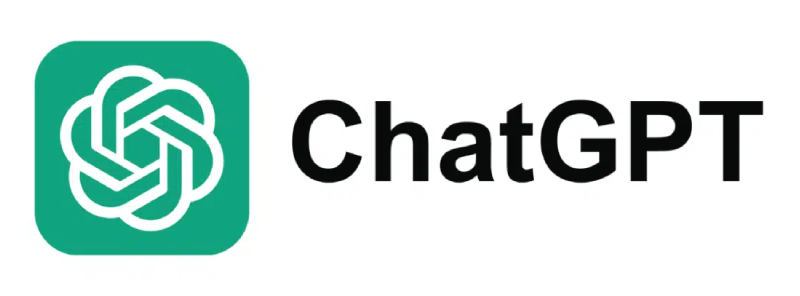As acquisition costs continue to rise, gaming studios must prioritize strategies to keep players engaged and prevent churn.
Artificial intelligence (AI) has emerged as a powerful tool for gaming companies to deep insights into player behavior, personalize experiences, and proactively address potential churn risks.
This article explores how AI can be effectively utilized to reduce customer churn and improve engagement in the gaming industry. We will delve into the key reasons players drop off, the benefits of AI for player retention strategies, and real-world examples of successful implementation.
Top Reasons Players to Disengage
Identifying why players disengage is crucial for crafting targeted retention strategies.
Unengaging gameplay
A primary reason is the absence of compelling content, which can lead to monotony or a lack of progression. Players crave new challenges and experiences, so when a game lacks innovative features or evolving gameplay, they quickly lose interest and look elsewhere for entertainment.
Technical shortcomings significantly contribute to player attrition. Persistent bugs, performance issues, or connectivity problems disrupt the gaming experience, causing frustration among users. These technical setbacks can prompt players to abandon a game in favor of more stable alternatives.
A slow customer support with long FCR times and waiting queues
When players face issues and encounter delays in receiving help, their frustration increases. This lack of effective support can undermine trust and loyalty, driving players to competitors that offer more responsive and efficient customer service solutions.
Addressing these fundamental concerns—stagnant content, technical challenges, and inadequate support—can greatly enhance player retention and satisfaction.
How AI Helps Predict and Prevent Churn
Artificial intelligence serves as an essential tool in identifying and mitigating player churn by processing extensive datasets to detect subtle patterns and signals. With predictive churn analysis, AI systems can pinpoint players who show early signs of disengagement, allowing gaming studios to implement strategic interventions. These analytics provide gaming companies with a clearer picture of potential churn catalysts, enabling them to craft specific strategies that align with individual player profiles.
AI-powered strategies leverage advanced behavioral analytics to monitor player interactions in real-time. By examining in-game activities, session lengths, and engagement rhythms, AI can flag potential drop-off points. This proactive approach facilitates timely engagement strategies, such as dynamic in-game events or personalized content offerings, designed to stimulate player interest and maintain their commitment to the game.
Moreover, AI-driven personalization tools enhance player engagement by delivering content and offers uniquely tailored to each player’s preferences. Through machine learning, AI evaluates historical data to generate recommendations that resonate with individual play styles. This tailored approach fosters a sense of belonging and loyalty, effectively reducing churn rates. By implementing AI for comprehensive player lifecycle management, gaming studios can ensure a cohesive and immersive experience that keeps players returning.
1. Using AI to Personalize the Player Experience
AI integration reshapes the gaming landscape by crafting experiences that align with each player’s distinct gameplay patterns. By leveraging intricate data analysis, AI curates bespoke content, from tailored missions to unique rewards, fostering a connection that drives ongoing engagement. This level of customization not only boosts player satisfaction but also strengthens loyalty, as players perceive the game as a reflection of their personal interests.
AI’s ability to learn and adjust in real-time allows for flexible personalization. As player behaviors evolve, AI systems update recommendations and game elements accordingly, reacting to immediate player actions. For example, if a player tends to excel in strategic tasks, the AI can seamlessly introduce more complex challenges to maintain their interest and provide a sense of accomplishment.
Additionally, AI optimizes monetization strategies by tailoring in-game purchasing options. By examining engagement trends and transaction data, AI can suggest purchases that align with player preferences, enhancing both the relevance and appeal of offers. This strategic personalization ensures players encounter offers that resonate with their interests, fostering a sense of value and encouraging sustained investment in the game.
2. Real-Time Support Automation
Integrating real-time support automation with AI-driven chatbots and virtual assistants can ensure players engage without interruptions, maintaining the momentum of gameplay and minimizing potential dissatisfaction.
Real-time support tools facilitate a seamless transition from issue recognition to resolution. AI systems adeptly diagnose issues—such as performance lags or gameplay errors—through advanced pattern recognition and data analysis. This proactive methodology not only resolves complications swiftly but anticipates possible disruptions, allowing for preemptive adjustments that preserve the integrity of the gaming experience.
Furthermore, real-time support automation empowers players with self-sufficiency. Through user-friendly interfaces and comprehensive resource access, players can independently navigate troubleshooting processes, alleviating the burden on human support and expediting problem resolution. This empowerment enhances player satisfaction, nurturing a sense of control and encouraging sustained engagement and allegiance to the gaming platform.
3. Churn Reduction and Engagement Metrics
AI can help gaming studios understand player behaviors and adapt strategies accordingly. This approach ensures alignment with both player expectations and business objectives, facilitating a nuanced understanding of the gaming ecosystem.
To assess churn reduction, studios should focus on metrics such as player retention rate, which reflects the percentage of players who continue to engage with the game over a given timeframe. A steady increase in this metric signals successful retention efforts, demonstrating that initiatives resonate with player needs. Consistent analysis of retention rates allows studios to discern patterns, measure the efficacy of AI interventions, and make informed adjustments to retention strategies.
Engagement metrics, including in-game activity levels, session frequency, and interaction depth, offer a detailed view of player commitment. These insights help studios gauge the impact of personalized experiences and identify opportunities for enhancing engagement. By leveraging these metrics, gaming companies can refine their offerings and ensure they meet evolving player demands, ultimately fostering sustained player loyalty and involvement.
Final Thoughts: Turning AI for Player Retention Strategy
Incorporating AI insights into a comprehensive player retention strategy involves more than just adopting technology; it necessitates a holistic approach that integrates strategic foresight with innovative engagement tactics.
For effective implementation, gaming studios should emphasize the following:
- Unified Data Strategy: Develop a cohesive framework that merges AI systems with current data architectures to create a comprehensive view of player interactions. This unified strategy facilitates precise insights and strategic actions aligned with individual player journeys. By eliminating data fragmentation, companies can fully exploit AI to drive meaningful engagement and informed decision-making.
- Integrated Team Dynamics: Foster a culture where data analysts, game designers, and user experience experts coalesce to align AI-driven insights with overarching business strategies. This collaboration ensures the creation of integrated strategies that address both player expectations and operational imperatives, promoting AI insights that lead to impactful organizational improvements.
- Adaptive Player Engagement: Implement mechanisms for continuously capturing player interactions and adapting AI models accordingly. This adaptive approach ensures that AI systems evolve in tandem with player preferences, maintaining the relevance and impact of personalized efforts. By establishing an iterative cycle of engagement, gaming companies can fine-tune their strategies to sustain long-term player involvement.
Integrating AI insights into a player retention strategy requires a commitment to adaptability and forward-thinking. By focusing on a unified data strategy, fostering integrated team dynamics, and maintaining adaptive player engagement, gaming companies can harness the full potential of AI to create compelling, resonant experiences that keep players engaged.
As the gaming industry continues to evolve, embracing AI-driven strategies will be crucial for reducing churn and fostering long-term player engagement. By leveraging the power of AI, gaming companies can unlock new opportunities to create personalized, immersive experiences that keep players coming back for more. If you’re ready to take your customer service to the next level and drive player retention, request a demo to explore how we can transform your operations and help you build lasting relationships with your players.
How Helpshift’s AI Help Reduce Churn
Leveraging advanced digital solutions like Helpshift, gaming companies can elevate their customer service operations to foster player retention and loyalty. The platform integrates innovative tools that address the evolving needs of gaming communities, ensuring that players receive efficient and responsive support. This comprehensive service model aligns with the expectations of modern gamers, who seek immediate and effective resolutions to their inquiries.
Helpshift’s in-game support features provide a direct line of communication between players and customer service teams. By facilitating real-time assistance within the game interface, players enjoy uninterrupted experiences and receive the help they need precisely when issues arise. This feature minimizes disruptions and enhances user satisfaction, as players can continue their gaming sessions seamlessly.
In addition, Helpshift’s sophisticated automation capabilities effectively handle routine issues, freeing customer service teams to focus on more complex challenges. By streamlining the resolution of common queries, these tools optimize resource allocation and improve service efficiency. The platform’s data analytics capabilities further empower gaming companies to monitor player interactions and adapt strategies to better meet player needs, thereby strengthening engagement and loyalty over time.








